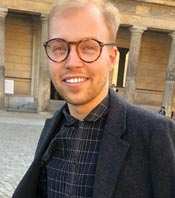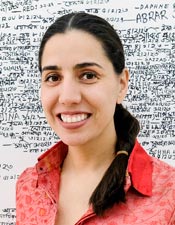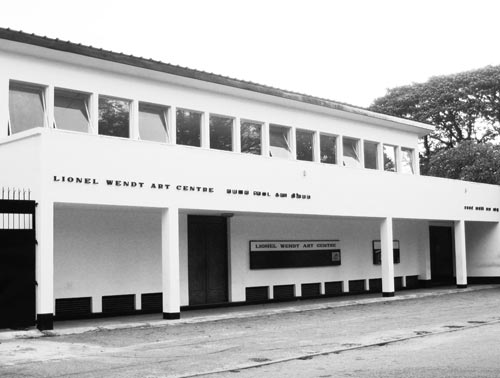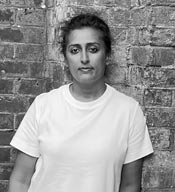Meet the stellar team of curators for KALA
View(s):
Iaroslav Volvod
KALA in association with the Lionel Wendt Art Centre will present its first iteration, opening to the public on Monday, January 29. Alongside the central exhibition of modern and contemporary artists, KALA’s goal as a platform is to present programming and projects building strong regional connections while benefiting the growth of the local art ecosystem.
KALA’s curatorial advisor for the first three years is Sandhini Poddar, adjunct curator at large of the Guggenheim Abu Dhabi, which is to open in 2026. With a deep understanding of South Asian modern and contemporary art, she has played a pivotal role in shaping discourse surrounding art from the region, both in India and internationally. Her academic background, combined with her professional experience over the past 20 years, have made her an authority in the field. In addition to her participation in the opening talk, ‘What is KALA?’ Poddar is one of the three senior curators who will conduct the artist portfolio reviews for 18 artists selected via open call.

Diana Campbell (Photograph by Shadman Sakib)
With Poddar, Diana Campbell and Iaroslav Volovoda make up the stellar team of curators from major international art institutions, who will handle the Artist Review Workshops – a rare opportunity to compare notes with art world professionals who have previous experience working with Sri Lankan and South Asian artists regionally, giving the artists an in-depth and knowledgeable perspective from which to review their portfolios.
Diana Campbell has served as the Artistic Director for the Samdani Art Foundation and Chief Curator of the Dhaka Art Summit launched in 2012. Diana was instrumental in developing the summit from a small Bangladesh pop up art festival into a major international art platform, one of the most prominent festivals in South Asia, celebrating the arts of the region. Curators and artists from around the world now converge at the summit to conduct research and explore the diverse landscape of South Asian arts across many disciplines.
 In addition to her role as Chief Curator for the Dhaka Art Summit, Diana is currently establishing the new permanent home for the Samdani Art Centre and Sculpture Park, Srihatta, based in Sylhet, and curating various international exhibitions and presentations for the Foundation. She will also be presenting a talk titled ‘Creating Space: South to South Dialogues’ on January 29 at 5 p.m.
In addition to her role as Chief Curator for the Dhaka Art Summit, Diana is currently establishing the new permanent home for the Samdani Art Centre and Sculpture Park, Srihatta, based in Sylhet, and curating various international exhibitions and presentations for the Foundation. She will also be presenting a talk titled ‘Creating Space: South to South Dialogues’ on January 29 at 5 p.m.
Iaroslav Volovod is curator of the Guggenheim Abu Dhabi Project. Formerly a curator at the Garage Museum of Contemporary Art in Moscow, Iaroslav was awarded a Diploma of Excellence from Central Institute of Hindi in New Delhi, India and participated in the TRANScuratorial Academy in Berlin and Mumbai. His field of research has recently included investigating South Asian artists in Britain, in addition to working as a curator with international and local art practitioners.
Tickets are available via ticket.lk or on site.
| Making South Asian artists equal players on a global stage | |
 The Lionel Wendt Art Centre: One of the main venues for KALA KALA–South Asia’s newest educational and artistic platform, inspired by the diverse culture and modern art history of Sri Lanka gets off the ground on January 29. Here Sandhini Poddar, Curatorial Advisor to KALA’s inaugural exhibition – Pivot Glide Echo in Colombo, who is also Adjunct Curator at Large, Guggenheim Abu Dhabi Project talks about KALA’s mission and vision. Extracts from her interview:
I remember going to my very first exhibition at the Jehangir Art Gallery in Mumbai at an age when I was shorter than the paintings and had to look up to view them! I never made a conscious decision to pursue art history; art has been part of my life since childhood. My mother, Dr. Rashmi Poddar, is an academic with a specialization in Indian philosophy and aesthetics and I was lucky to be able to travel with my family to far-flung places rich in history such as Egypt, Italy, Jordan, Syria, Turkey, and Uzbekistan as a teenager. My formal studies in philosophy and art history began at university in Mumbai and continued for a decade until I started working in New York at a new not-for-profit art space in Chelsea in 2003. I joined the Solomon R. Guggenheim Museum and Foundation as one of their two curators of Asian art in 2007 and have had a wonderfully fruitful relationship with the foundation since then.
I have quipped about this in the past, but it’s worth saying again: if you liken South Asia to a football field, we have the players but not the pitch! What do I mean by this? Our infrastructures for the study and appreciation of our artists and art histories is still woefully lacking. Infrastructure here of course doesn’t only apply to the hardware: museums, universities, not-for-profits, biennales and art festivals, artist residencies, grant-making bodies, governmental support and investment, commercial galleries and auction houses, but as importantly, to the software: highly trained and motivated curators, critics, and writers who help establish new canons of world art history and register us as equal players on a global stage.  Sandhini Poddar I was taught from an early age to care about the field—the field at large, and by this I mean the intellectual and aesthetic terrain of South Asian art—rather than pay heed to my individual aggrandisement. Too often we find ourselves in positions of isolation rather than active collaboration and solidarity. When I was invited to serve as the Curatorial Advisor for KALA for the first three iterations, I was very happy to commit straightaway. What better way is there for me to give back to my region than with my time, care, and sheer passion? We all need mentors, we all need comrades in arms, we all need supporters and guardians, and we certainly all need each other. I am very excited about spending more time in Sri Lanka for KALA, which will enable me to sit down and learn from artists.
In the short term I would hope that it would add positively to the critical initiatives that already exist in Sri Lanka—since we are not starting at tabula rasa—and that it would serve as a safe and productive space for artists, thinkers, curators, students, and lay audience members to come together to celebrate Sri Lanka’s wonderful artist citizenry, both at home and in the diaspora. Over time I hope that KALA will serve as another nodal point within South Asia, alongside other vital projects in Bangladesh, India, Nepal, and Pakistan, so that more regional collaboration can occur. |
Searching for an ideal partner? Find your soul mate on Hitad.lk, Sri Lanka's favourite marriage proposals page. With Hitad.lk matrimonial advertisements you have access to thousands of ads from potential suitors who are looking for someone just like you.


